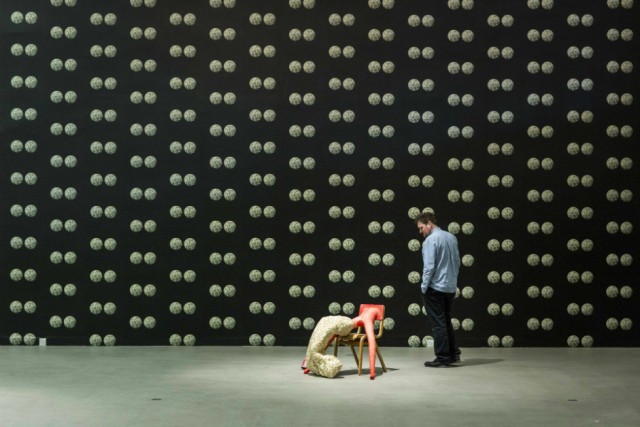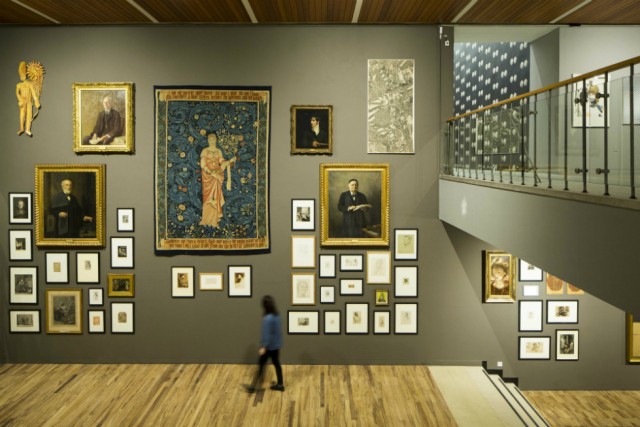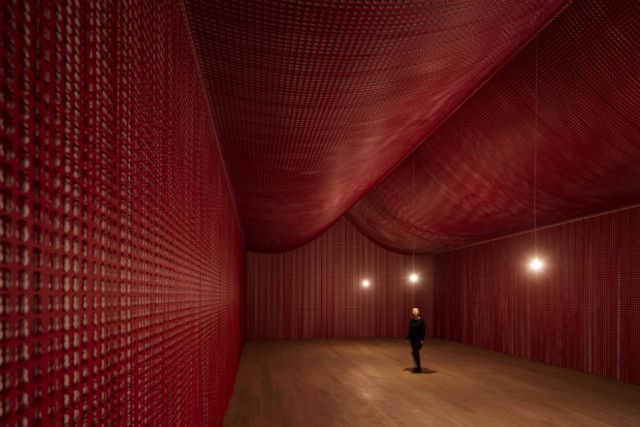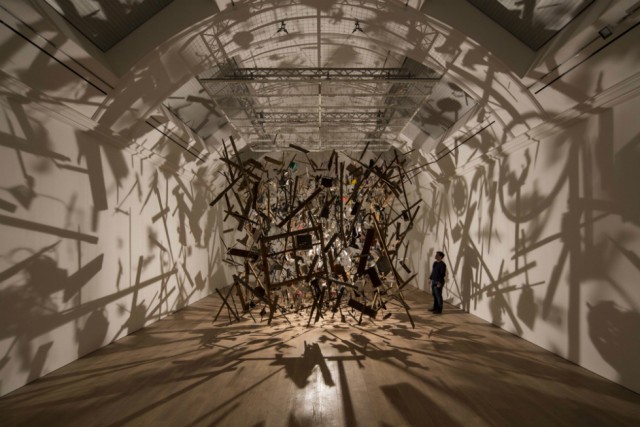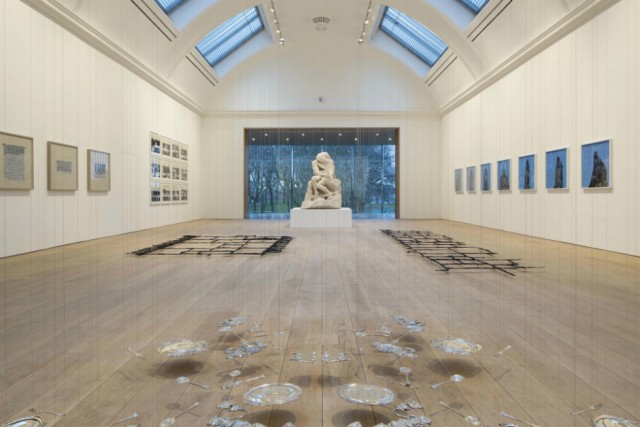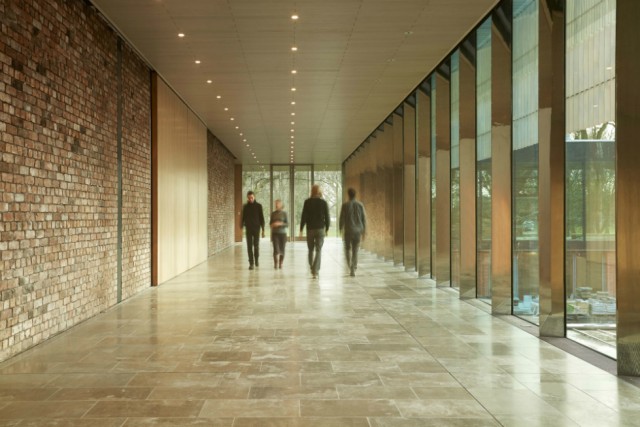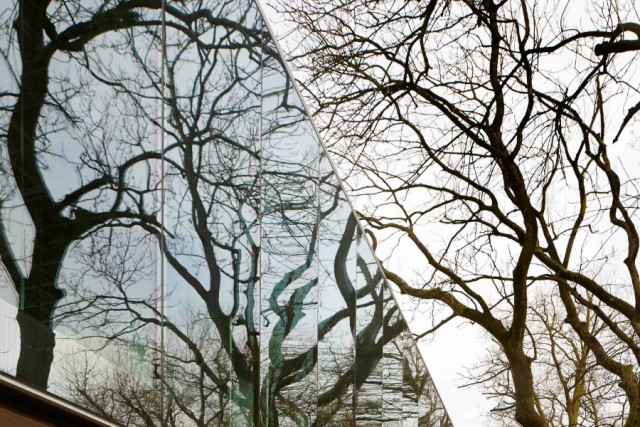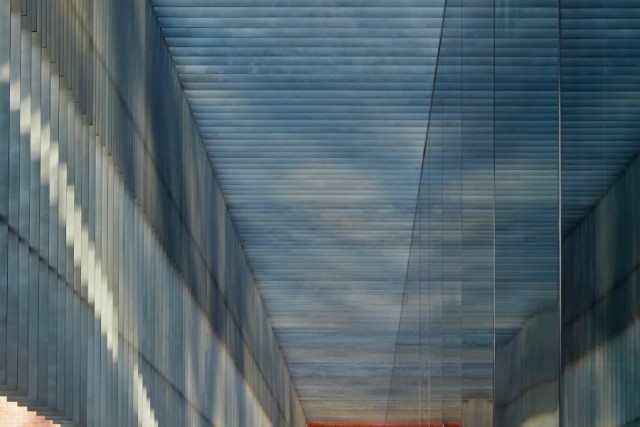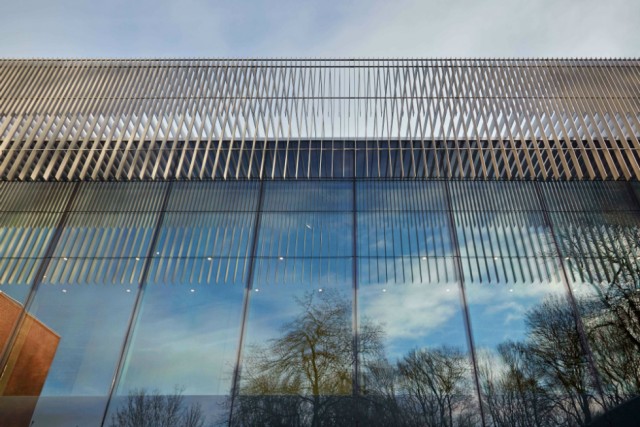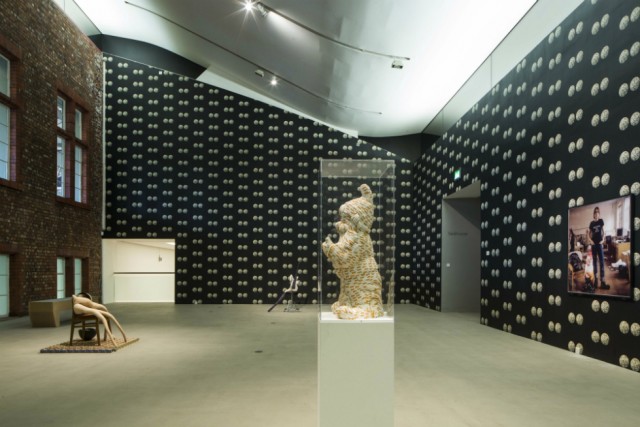We Fell In Love Again: The Whitworth — Reviewed
Calling for us to ‘fall in love again’ this Valentines Day, the Whitworth Art Gallery is opening its doors after a major £15m redevelopment. But did our first date go off with a bang?
What a pleasure it is to see such a sympathetic restoration. Visiting the new and improved Whitworth Art Gallery this week ahead of today’s grand opening, we felt surrounded by fresh air. Rather than a total transformation, architects MUMA have swept away some of the gallery’s gloominess — opening up vistas onto the Victorian park in which it is famously based — whilst keeping a firm sense of ‘self’. It feels and looks like the same old Whitworth — but with a major makeover, introducing a mood and quality that is alive and arguably more relevant.
Walk, as we did, through the sunny main foyer, past the shop, and into the first long room, and experience a sensation that is both familiar and alien. Here is the Textile Gallery, still showcasing a selection of the Whitworth’s extensive textile collection behind large glass panelling, but hang on… everything is green: reflecting the park and trees and grass. It’s a celebration of colour through Willam Morris, Keith Vaughan, Susie MacMurray and more. The space also feels a lot bigger.
Heading left through into the South Gallery — the 1960s wing much-loved by visitors — you are immediately bathed in light. This is more like it. MUMA have again kept the feel of the space whilst elongating and brightening everything; you can now look into the park both through the large, left-hand side windows and straight ahead of you through the new glass and metal extension. This contemporary bit looks like a hall of mirrors, full of reflection and light.
Strolling past new acquisitions donated by The Karpidas Foundation — including YBA Gary Hulme and Turner Prize winner Laure Prouvost — to the back of the building, you will find the main event: Cornelia Parker’s largest solo show to date. Here, The Distance (A Kiss With String Attached) (2003) holds court, entwining Rodin’s lovers with string, the work highlighted by a backdrop of parkland. Surrounded by smaller works — black bronze casts of pavements and flattened brass instruments — Parker has utilised the newly extended Central Exhibition Gallery to glorious effect. Her installation War Room features reams of blood-red punched-out paper remembrance poppies, draped like the inside of an Arabian tent, generating an oddly disturbing vibe. This room is cleverly paralleled with Cold Dark Matter — the blown-up and reassembled shed that made Parker’s name in 1991. The shadows are breathtaking and worth a visit alone.
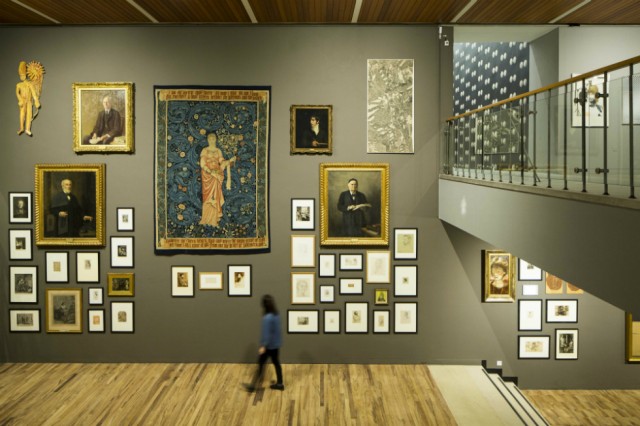
At the back of the building resides Nathan Coley’s Gathering of Strangers (2007), blazing over the park from its new rooftop home; highlighting, as Director Maria Balshaw puts it, the importance of bringing people together in an age of division. It is also one of 11 outdoor artworks now in the Whitworth public park, gently encouraging people into the gallery and vice-versa. It is here that Maria tells us about the Study Centre, a research library where visitors can request a private audience with any one of the gallery’s 50,000-plus special objects. It is in these touches that we start to understand the significance of many thoughtful and important actions; the Whitworth team have succeeded in providing us with a beautiful experience, thoughtful of its audience both new and old, unobtrusive to its setting and respectful of its history, and quietly confident in its future.
Onwards. Cai Guo-Qiang’s Unmanned Nature (2008) is a spectacular way to experience the new Landscape Gallery. Originally created for Hiroshima’s Peace Museum, it is a vast installation of ancient-looking ‘gunpowder drawings’ on floor-to-ceiling paper, surrounding a pool of still water. The accompanying video documenting how the drawings are made using real explosives is fascinating, and gives a whole new context to the work.
David Bachelor’s new commission Plato’s Disco — resembling a huge glass wind chime — and Johnnie Shand Kydd’s Hydra — a personal selection of his infamous celebrity photographs, including many Young British Artists – lead you happily to a re-hang of the Whitworth’s permanent collections. The Portrait Room, which Balshaw (accurately) describes as acting “as a history of the gallery itself”, is possibly our favourite space so far: full of paintings, drawings and sculpture, including a coy multi-media by Lynn Hershman Leeson that brings back vivid memories of their 2007 exhibition. The upstairs 1960s Room is similar in style and format: Balshaw recollects how Tate Director Nicholas Serota, on visiting the Whitworthin its ’60s heyday, made him understand what modern art was. The permanent collections aren’t the ‘wow’ factor here — that’s the role of the many temporary exhibitions. Their job is to re-communicate the Whitworth story, and that it does. We look forward to seeing how these works may be added to and re-shuffled over coming years, like a family album.
Talking about wow factors: venturing into Sarah Lucas’ Tits in Space (2000) is like being grabbed and shaken: her wallpaper is an irreverent background to equally ‘fuck you’ sculptures made with cigarettes and tights. This is followed by a rather more subdued and curious installation of etched thoughts and musings by Thomas Schütte. Heading downstairs for the final leg of our Whitworth tour, we find a room of Turners: 22 watercolours by J. M. W. Turner (plus a few by William Blake and John Robert Cozens) alongside the backs of Turner canvases as reframed by Cornelia Parker — the latter looking like dead sea scrolls. Then we we’re back in the foyer.
There are all sorts of things here to enjoy — we’ll have to return to eat at Peter Booth’s award-winning cafe, and walk around the sculpture gardens, and see all the exhibitors again in more detail — but our overall impression is just of pure joy. Sympathetic restoration is incredibly difficult to achieve, and an arts venue has its own unique pressures: not upstaging the art works, not annoying a loyal audience, not ruining an already good-looking Victorian building. Needless to say, we can predict that our first date at the new Whitworth will lead to a romantic, long-term relationship.
Laura Robertson
Fall in love again on Valentines Day: the Whitworth unveil the results of their major £15m redevelopment today in a special opening weekend: Saturday 14 until Sunday 15 February 2015. See the full programme of events here – including special talks, outdoor art walks and live music
Want more pictures? See our press tour on Instagram
Read Sara Jaspan’s interview with director Maria Balshaw on all the exciting changes here

